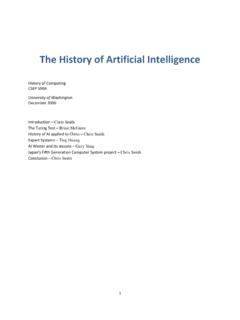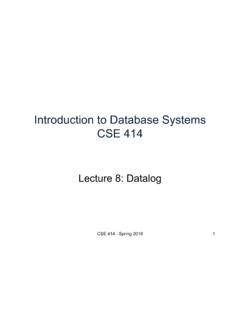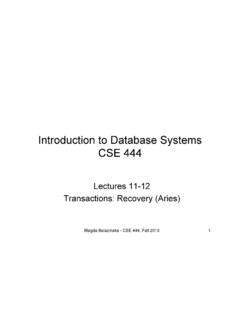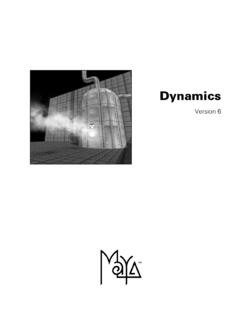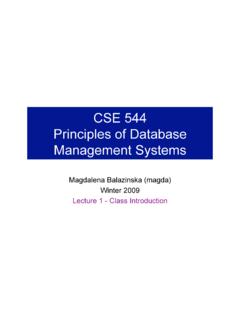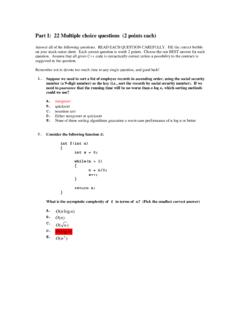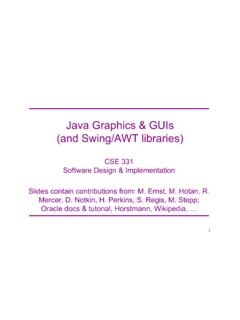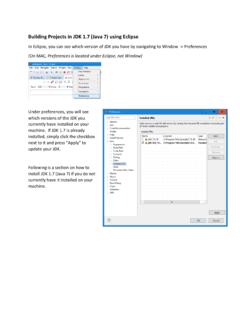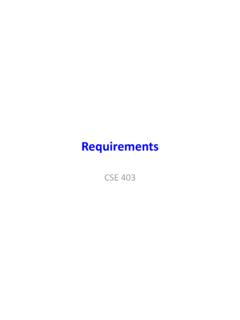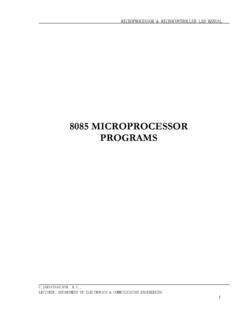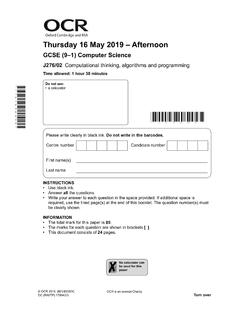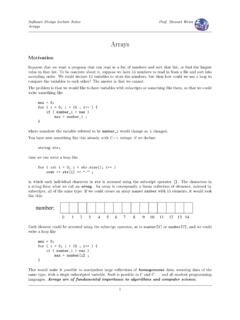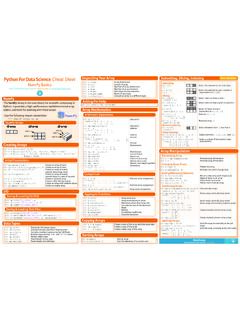Transcription of Part I: 20 Multiple choice questions (2 points each)
1 Part I: 20 Multiple choice questions (2 points each) Answer all of the following questions . READ EACH QUESTION CAREFULLY. Fill the correct bubble on your mark-sense sheet. Each correct question is worth 2 points . Choose the one BEST answer for each question. Assume that all given C++ code is syntactically correct unless a possibility to the contrary is suggested in the question. In code fragments, YOU SHOULD ASSUME THAT ANY NECESSARY HEADER FILES HAVE BEEN INCLUDED. For example, if a program does input or output, you should assume that header files for the appropriate stream library have been #included, and that using namespace std; has been provided, even if it is not shown in a question. Remember not to devote too much time to any single question, and good luck! Given a binary search tree, which traversal type would print the values in the nodes in sorted order ?
2 A. Preorder B. Postorder C. Inorder 1. D. None of the above What is the running time of the following code fragment? for(int i=0; i<10; i++) for(int j=0; j<N; j++) for(int k=N-2; k<N+2; k++) cout << i << " " << j << endl; A. O(log N) B. O(N log N) C. O(N) D. O(N2) 2. E. O(N3) Suppose we re debugging a quicksort implementation that is supposed to sort an array in ascending order . After the first partition step has been completed, the contents of the array are in the following order : 3 9 1 14 17 24 22 20 Which of the following statements is correct about the partition step? A. The pivot could have been either 14 or 17 B. The pivot could have been 14, but could not have been 17 C. The pivot could have been 17, but could not have been 14 3.
3 D. Neither 14 nor 17 could have been the pivot CSE 143 2000 Au Final Exam VERSION A Page 2 of 17 Which of the following statements about binary trees is NOT true? A. Every binary tree has at least one node. B. Every non-empty tree has exactly one root node. C. Every node has at most two children. 4. D. Every non-root node has exactly one parent. Which of the following will be the likely result of failing properly to fill in your name, student ID, section number, and EXAM VERSION on your scantron form? A. A score of 0 will be recorded for the Multiple choice portion of the final exam, regardless of how many questions you answer correctly. B. Your grade in the course will be lower than it might otherwise be since a 0 will be recorded for the Multiple choice portion of the final exam.
4 C. You will earn the gratitude of your classmates by helping to lower the curve, since a 0 will be recorded for the Multiple choice portion of the final exam. D. You will need to do exceptionally well on the programming portion of this exam to help offset the 0 that you will earn for the Multiple choice portion. 5. E. All of the above Suppose we have two classes, one of which extends the other: class Base { .. }; class Derived: public Base { .. }; Now suppose we execute the following program: line 1 int main( ) { line 2 Base* b; line 3 Derived* d = new Derived; line 4 b = d; line 5 delete d; line 6 return 0; line 7 } What is the static type of variable b after line 4 has been executed and before line 5 is executed?
5 A. Base * B. Base & C. Derived * D. Derived & 6. E. Derived [The dynamic type of a variable can change as the result of an assignment, but the static type is fixed it s the one given in the variable s declaration.] CSE 143 2000 Au Final Exam VERSION A Page 3 of 17 How many times is the symbol # printed by the call foo(4)? void foo (int i) { if (i > 1) { foo (i/2); foo (i/2); } cout << "#"; } A. 3 B. 4 C. 7 7. D. 8 E. Something else A class template in C++ has the following structure template <class T> class TemplatedClass { .. }; What is the meaning of T in the above declaration? A. It is a placeholder for a pointer value B. It is a placeholder for a type name C.
6 It is a string variable D. It must be an integer constant 8. E. It must be a function name Are there any dynamic memory management errors in the following code? int *p = new int; int *q = new int; int *r; *p = 17; r = q; *q = 42; p = q; delete r; A. No, there are no errors B. Yes, a memory leak C. Yes, misuse of a dangling pointer D. Yes, both a memory leak and misuse of a dangling pointer 9. E. Yes, a dangling chad CSE 143 2000 Au Final Exam VERSION A Page 4 of 17 Suppose we have the following pair of class definitions, along with implementations of some functions of the derived class.
7 Class Odd { public: virtual void setName(string name); virtual void setID(int id) = 0; protected: int id; private: string name; }; class Deranged: public Odd { public: virtual void setName(string name); virtual void setID(int id); }; Deranged::setName(string name) { this->name = name; // this is statement A } Deranged::setID(int id) { this->id = id; // this is statement B } The question concerns whether the two statements labeled A and B are legal ( , will be accepted by a standard C++ compiler).
8 A. Both statements are legal B. A is legal, B is not C. B is legal, A is not 10. D. Neither statement is legal CSE 143 2000 Au Final Exam VERSION A Page 5 of 17 Suppose we have the following class whose underlying data structure is a linked list of ListNodes. class List { public: // other public functions ~List(); private: struct ListNode { int item; ListNode *next; }; ListNode *head; }; Which of the following sequences of code could be used in the destructor ~List() to correctly delete all of the nodes in the list? (Which ones are legal, even if the style is atrocious?) I. for (ListNode *n = head; head != NULL; head = n) { n = head->next; delete head; } II. for (ListNode *n = head; n !)
9 = NULL; n->next) { delete n; } III. ListNode* n; while (head != NULL) { n = head->next; delete head; head = n; } A I and II only B. II and III only C. I and III only 11. D. III only E. I, II, and III CSE 143 2000 Au Final Exam VERSION A Page 6 of 17 Suppose you were implementing a data structure to store information about the paintings on display at an art dealer s showroom. Of the following data structures, which one is the right one to use? A. Unordered array B. Sorted array C. Linked list 12. D. Binary search tree E. It depends [This was a recurring theme in our discussions of data structures. You have to know how the data structure will be used and which operations need to be efficient to make an intelligent choice .]
10 The question doesn t provide enough information to do this without additional guesses or assumptions.] In lecture we defined a class IntStack to implement a stack of integers: class IntStack { public: IntStack( ); bool isEmpty( ); void push(int item); int pop( ); int top( ); } What happens if we execute the following statements? IntStack s; int n1, n2, n3; (17); (143); (42); n1 = ( ); n2 = ( ); (n1); n3 = ( ); n1 = ( ); A. Stack contains 143 (top), 17 (bottom); n1=42, n2=42, n3=42 B. Stack contains 42 (top), 42, 143, 17 (bottom); n1=42, n2=42; n3=42 C.

